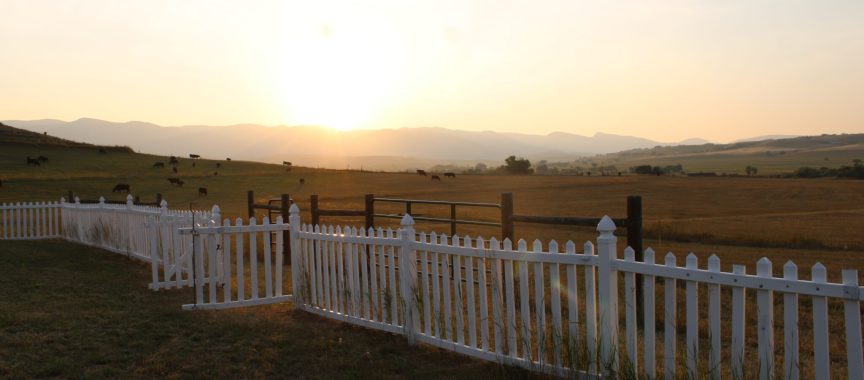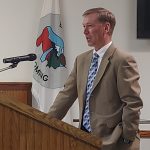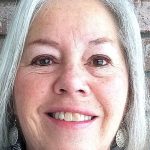News – Sheridan Media

The cemetery at Fort Phil Kearny may be abandoned but not forgotten. The annual program and cemetery hike to learn more about its history was held on Wednesday, September 3.
The event started in the Fort Phil Kearny Interpretive Center with a short presentation by Site Superintendent Sharie Shada on the history of the cemetery and its occupants.
Shada showed some photos of some of the people who were buried in the cemetery. Two of those were Colonel Fetterman, (he had been a lieutenant colonel by brevet the Civil War) and Glover Ridgeway, a Quaker photographer, who was killed by the Indians.

After the background talk, Shada led the mile hike up to the cemetery. She said in 1866, it was the first project to break ground, after two soldiers were killed.

The cemetery was laid out in 1866, Quartermaster Warren compiled a description, ground plan, grave inventory and a sketch of the proposed cemetery, including a monument, which was never built. This was sent to the Quartermaster General in Washington. Shada read his description.
In 1868, after the Ft. Laramie treaty, the U.S. Army abandoned the post, and the area was returned to the Indians.

Soon after this, the army began a policy of to exhume burials and move them from abandoned military cemeteries to from abandoned to active cemeteries.

In 1888, twenty years after the fort was abandoned, the army ordered the soldiers, under the command of Captain J.M. Sanno to exhume, identify and transport all remains to the Custer National Cemetery near the Custer National Battlefield.
Shada added,

The majority of the burials were from the Fetterman Fight, but there were also some causalities from the Wagon Box Fight, some who died of accidents or illness.
The main causes of death at the Fort were wounds and battle fatalities, and disease. Fresh fruits and vegetables were not readily available. Without those nutrients, like vitamin C, soldiers contracted diseases such as scurvy. They also died of typhoid, hepatitis, pneumonia, and dropsy, which today we call edema.

During the early part of the 20th Century, the cemetery was used for some years by area homesteaders. Many of the burials were moved to a nearby cemetery, but some remained. She said that it was difficult to find who were actually buried in the cemetery during the homestead era.
There is also a grave of a homesteader’s child, and the site remains sacred and hallowed ground.
The evening was warm and calm, and attendees were treated to a view of the sunset over the Big Horn Mountains from the cemetery. The event was attended by around ten people who joined in the hike.
Last modified: September 5, 2025






